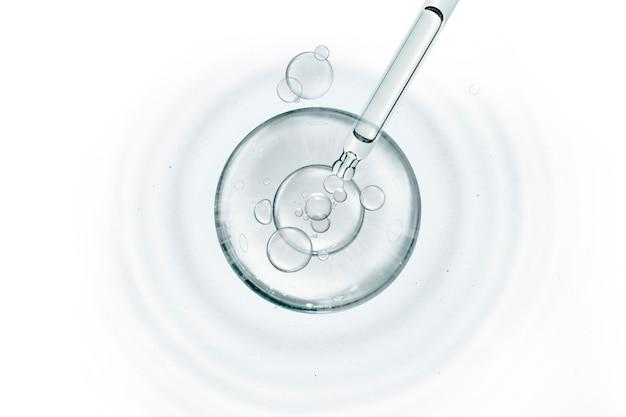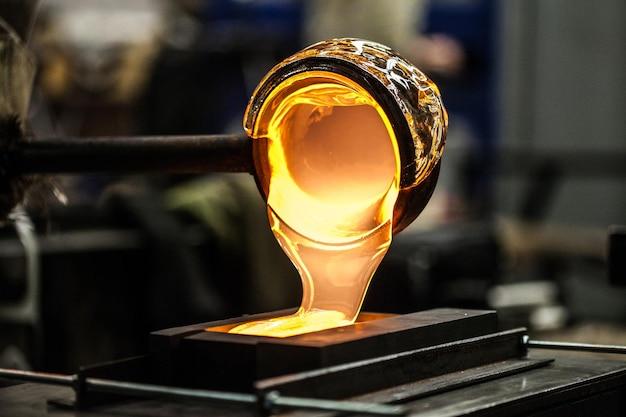Glass is a material that we encounter every day, from the windows in our homes to the screens of our smartphones. But have you ever wondered how well glass conducts heat? In this blog post, we will delve into the fascinating world of thermal conductivity and explore why glass is often considered a poor heat conductor.
We’ll answer popular questions like why glass is a bad insulator compared to materials like wood and plastic, and why foil cools faster than glass. We’ll also explore the heat conductivity of different materials, such as ceramic and aluminum, to see if glass holds its ground. Additionally, we’ll investigate why glass doesn’t allow heat to escape easily and whether it can be used for insulation purposes.
So, if you’ve ever wondered whether glass can get as hot as the sun, or why copper outperforms glass as a heat conductor, keep reading to uncover the mysteries of glass and its relationship with heat conductivity.
How Well Does Glass Conduct Heat
Glass is a material that is commonly used in various applications, from windows to cookware. But have you ever wondered how well it conducts heat? Let’s dive into this fascinating topic and explore the thermal conductivity of glass in more detail.
Understanding Thermal Conductivity
Thermal conductivity refers to a material’s ability to conduct heat. It is measured in units called watts per meter kelvin (W/mK). The higher the thermal conductivity value, the better a material conducts heat. Conductors, like metals, have high thermal conductivity, while insulators, like foam or wood, have low thermal conductivity.
Glass as a Thermal Conductor
Glass is an interesting material when it comes to heat conductivity. It falls somewhere in the middle of the thermal conductivity spectrum, with values typically ranging from 0.8 to 1.5 W/mK. Although glass is not the best conductor, it is not a complete insulator either. Its thermal conductivity is higher than that of most insulating materials like wood or plastic.
Factors Affecting Glass’s Heat Conductivity
Several factors influence how well glass conducts heat. One important factor is the composition of the glass itself. Different types of glass have different thermal conductivity properties. For example, borosilicate glass, commonly used in laboratory equipment and cookware, has a higher thermal conductivity compared to soda-lime glass used in windows.
Another factor is the thickness of the glass. Thicker glass generally conducts heat more slowly compared to thinner glass. This is because heat transfer occurs through molecular vibrations, and thicker glass allows less efficient heat transfer between molecules.
Insulating Properties of Glass
Although glass has some degree of thermal conductivity, it also possesses insulating properties. Glass is commonly used as a window material due to its ability to keep indoor spaces insulated from outdoor temperatures. This is achieved through the use of double glazing, which refers to two glass panes separated by a layer of air or gas. The trapped layer of air or gas acts as an additional insulating barrier, reducing heat transfer through the window.
Practical Applications
Glass’s thermal conductivity properties make it suitable for various applications. For instance, in laboratory settings, borosilicate glassware allows for better and more precise heat transfer during experiments. Similarly, glass cookware, such as Pyrex, is popular because it conducts heat evenly and efficiently, resulting in better cooking results.
In conclusion, glass falls somewhere in between as a thermal conductor. While it is not the most efficient material for conducting heat, it is still capable of moderate heat transfer. Glass’s thermal conductivity can vary depending on factors like composition and thickness. Its insulating properties also make it a useful material for windows and other applications where temperature control is necessary. The next time you look through a glass window or use glass cookware, you’ll have a better understanding of how it handles heat.
FAQ: How Well Does Glass Conduct Heat
Welcome to our FAQ section on the topic of how well glass conducts heat! Here, we’ll address some common questions and shed light on the fascinating world of heat conductivity in glass. So grab your favorite drink, sit back, and let’s dive in!
Why is glass a poor insulator
Glass is a poor insulator because of its molecular structure. It consists of tightly packed atoms with very little room for free movement of electrons, which are responsible for heat transfer. As a result, glass doesn’t trap heat effectively and allows it to escape easily.
Why does foil cool faster than glass
Foil cools faster than glass because it is an excellent conductor of heat. When heat is applied to foil, it quickly spreads throughout its surface and dissipates, leading to faster cooling. Glass, on the other hand, is not as efficient at conducting heat, so it takes longer to cool down.
Does ceramic heat up faster than glass
Ceramic and glass have similar heat conductivity properties, so they heat up at a similar rate. Both materials are not great conductors of heat, meaning they take some time to warm up. However, once heated, ceramic and glass can retain heat for extended periods.
Does glass increase heat
No, glass does not increase heat on its own. It is not a heat source but rather a material that can absorb and retain heat. If glass is exposed to a heat source, it will warm up, but it doesn’t generate heat itself.
What heats up faster, aluminum or glass
Aluminum heats up faster than glass. Aluminum is an excellent conductor of heat, allowing it to quickly absorb and distribute heat energy. In comparison, glass is a relatively poor conductor and takes longer to heat up.
Is glass a good conductor of heat
No, glass is not a good conductor of heat. Its molecular structure restricts the movement of electrons, which hinders heat transfer. Although glass can become hot when exposed to heat, it does not conduct heat efficiently like metals do.
Why are plastic and wood bad conductors of heat
Plastic and wood are bad conductors of heat due to their molecular structure. Both materials have loosely packed atoms and limited electron mobility, which hinder heat transfer. This property makes them effective insulators, as they can slow down heat flow and prevent thermal energy loss.
What are some poor heat insulators
Some poor heat insulators include materials like metal, glass, and stone. These substances have higher thermal conductivity and allow heat to escape more easily. In contrast, materials such as wood, plastic, and fiberglass are better insulators as they impede heat transfer.
Is glass a good conductor of heat
No, glass is not a good conductor of heat. Because of its molecular makeup, heat does not flow through glass efficiently. It acts as a barrier to heat transfer rather than facilitating it.
Why does glass not allow heat to escape
Glass does not allow heat to escape easily because it is a poor conductor of heat. When there is a temperature difference between the inside and outside of a glass surface, the heat tries to transfer from the hotter side to the colder side. However, the low conductivity of glass slows down this process, preventing heat from escaping quickly.
Is glass good for insulation
Glass by itself is not a good insulator. Its low conductivity allows heat to escape more readily. However, when combined with other insulating materials like double-glazing or low-emissivity coatings, glass can enhance insulation properties and reduce heat transfer.
Why is wood a poor conductor of heat
Wood contains a high amount of air pockets in its cellular structure, which acts as a barrier to heat transfer. Additionally, wood’s molecular arrangement limits the movement of electrons, reducing its ability to conduct heat effectively. These factors make wood a poor conductor of heat.
Is glass a better conductor of heat than wood
Yes, glass is a better conductor of heat than wood. While both materials have low thermal conductivity, glass still conducts heat more efficiently than wood due to its atomic structure. Even though glass isn’t considered a strong conductor overall, it surpasses wood in this aspect.
How hot can glass get in the sun
The temperature glass can reach in the sun depends on various factors like sunlight intensity, duration of exposure, and glass thickness. However, under extreme conditions, glass exposed to direct sunlight can reach temperatures exceeding 200°F (93°C).
How fast does glass conduct heat
Glass conducts heat relatively slowly compared to metals. The exact speed of heat conduction depends on various factors like glass thickness, composition, and surface area. However, in everyday scenarios, glass tends to heat up gradually rather than instantaneously.
Which material is the worst conductor of heat
Air is the poorest conductor of heat among common materials. Its low thermal conductivity arises from the large gaps between air molecules, which restrict heat transfer. This principle is why insulation often incorporates trapped air layers to maximize efficiency.
What conducts heat better, metal or glass
Metals conduct heat significantly better than glass. Metals have a high thermal conductivity due to their atomic structure, which allows heat energy to flow more easily. Glass, with its compact molecular arrangement, falls behind in terms of heat conduction.
What is the best material for insulation
The best material for insulation depends on the specific application. However, commonly used insulation materials include fiberglass, mineral wool, cellulose, and spray foam. These materials have low thermal conductivity, providing effective barriers to heat transfer.
Why is copper a better heat conductor than glass
Copper is a better heat conductor than glass because it has more free electrons that are able to quickly transfer heat energy. The atomic structure of copper promotes efficient heat conduction, whereas glass restricts electron flow, making it a weaker conductor.
Why can you walk on red-hot coals without getting burned feet
Walking on red-hot coals without burning your feet is possible due to low thermal conductivity and fast heat dissipation. The hot coals have a high temperature but are poor conductors of heat. Therefore, the heat is not transferred quickly enough to cause substantial injury, allowing for a brief walking experience.
Why does glass get so hot
Glass gets hot when exposed to heat because it absorbs thermal energy from its surroundings. It may not distribute or conduct heat as efficiently as metals, but glass still retains heat, leading to its temperature increase.
Does glass heat up faster than steel
No, steel generally heats up faster than glass. Steel is a good conductor of heat, enabling it to quickly absorb and distribute thermal energy. In contrast, glass has lower heat conductivity and takes longer to heat up.
Why is copper a better conductor than glass
Copper is a better conductor than glass due to its atomic structure. The presence of excess free electrons in copper enables efficient transfer of thermal energy. Glass, on the other hand, has a more restricted electron movement, making it a weaker conductor of heat.

